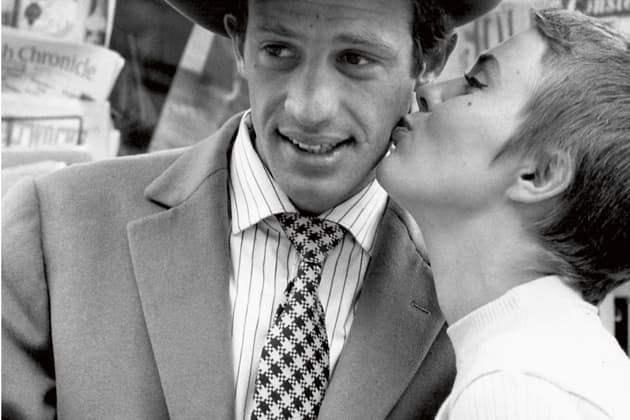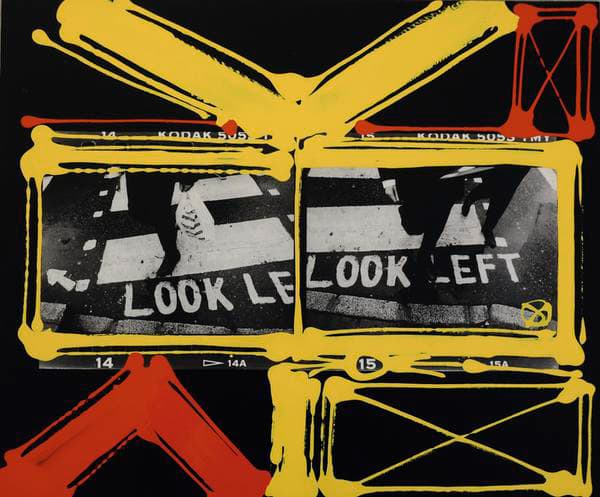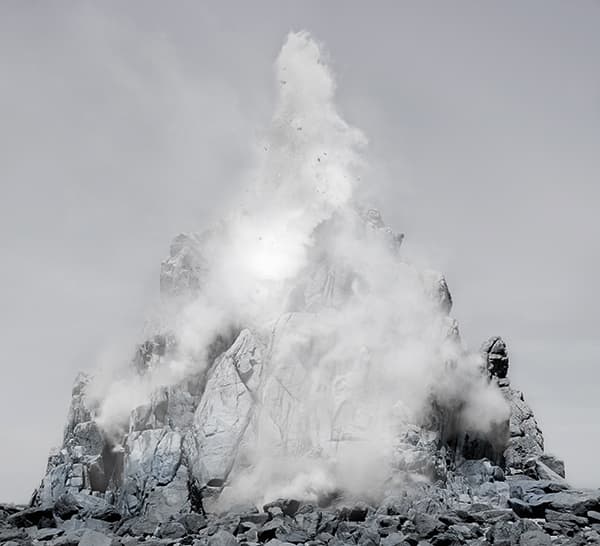For four days in May, London’s Somerset House hosted Photo London – a new photography fair for the capital. Thousands flocked to the historic landmark to admire and buy vintage and contemporary photography prints by established names and emerging talent. The organising body, creative consultancy Candlestar, was keen to ensure members of the public and photography enthusiasts felt just as welcome as serious collectors, which they did by offering a packed public programme of events and talks supported by the LUMA Foundation.
A few highlights
There was much to admire and ogle across the board, from 19th and 20th century masterpieces to cutting-edge contemporary prints. As you might expect, many of the biggest names in photography were represented. Henri Cartier-Bresson popped up a few times. His images were on show at galleries such as Peter Fetterman Gallery, and Eric Franck Fine Art. The former also showed Steve McCurry’s iconic Afghan Girl; we all know the image, but it remains a powerful sight, no matter how many times it’s seen – and to view works such as this in the flesh is always a thrill.

Cooling Tower, Power Station, Scheibler Textile Facory, Lodz, Poland, 2012, Photo © Yves Marchand & Romain Meffre Polka Galerie
For those with a penchant for elegance and classic fashion photography, Bernheimer gallery showcased beautiful prints by Vogue photographer Horst P Horst, and stunning black & white portraits by photographer of the stars, Annie Leibovitz. HackelBury Fine Art showed several of William Klein’s fashion portraits, while Bernard Quaritch Ltd showed examples of Roger Mayne’s British street photography. Elsewhere Crane Kalman Brighton showed mesmerising prints by Judith Lyons from her Photographic Reproduction series, which features manipulated images of sperm, ova and embryos.
Purdy Hicks Gallery showed work by Susan Derges, who has perfected the art of creating photographs by immersing photographic paper into rivers or shorelines and exposing it by moonlight with the help of a torch. James Hyman Gallery impressed with selections by Edward Weston, André Kertész, Raymond Cauchetier and a rare photogenic drawing by William Henry Fox Talbot, Veronica in Bloom dating back to 1840. The gallery also showed what was the most expensive work at the fair, La Grande Vague by Gustave Le Gray, priced at £250,000. In addition, a booth full of anonymous photographs at Galerie Lumière des Roses from the early 20th century was a reminder of how fascinating vernacular photographs can be.
Big names and public exhibitions
The fair was also an opportunity to spot and get close to famous photographers, including McCurry who did a book signing at the Phaidon Press stand. Mitch Epstein signed books at the Galerie Thomas Zander booth, which presented an impressive gridded wall display of images from his New York Arbor series, featuring images of ‘idiosyncratic’ trees in New York City, some of which are hundreds of years old.
Elsewhere, as part of the public programme, Photo London showed a number of special exhibitions: Beneath the Surface a selection of 128 rarely seen ‘treasures’ from the V&A photography collection, and Prostitute a documentary series shot in the red light district of Tehran from 1975-77 by the late Iranian photographer Kaveh Golestan. Curated by Martin Barnes, senior curator of photographs at the V&A, the former includes striking photographs of London in the 1860s and 1900s by William Strudwick and Benjamin Stone, as well as work by Harold Edgerton, and continues until 24 August 2015. Prostitute is a sobering portrayal of ghettoised female sex workers who lived in the notorious Citadel of Shahr-e No district in Tehran. Spectacular platinum prints from Sebastião Salgado’s celebrated series Genesis were also on show and provided a rare opportunity to see prints from the master photographer’s epic series, which documents tropical rainforests, savannahs, mountains, and glaciers the world over.
New talent was represented in a dedicated eight-gallery strong ‘Discovery’ section, among them London’s Edel Assanti, which showcased work by Royal College of Art graduate Noémie Goudal. Elsewhere, a screen showed the winning images of 10 photographers in the first Graduate Photographers Award, organised by Magnum Photos and Photo London.
Off-site
While the fair itself could be described as homage to photography old and new, some of the most exciting work was shown away from Somerset House in galleries and pop-up spaces across the city. Part of the organisers’ aim was for London to become a photography hub for the duration of the fair. To their credit, the main festival was very encouraging of a fringe programme, which began in the days leading up to Photo London and continued after it. Top of the bill was Offprint London, a free art and photography publishing fair at Tate Modern’s Turbine Hall produced by the team behind Offprint Paris, and Simon Baker, curator of photography and international art at Tate. An impressive sight to behold, the fair featured more than 150 independent publishers, selling a huge range of photobooks – an exciting counterpoint to the formalities of the fair across the Thames.

Vogue 1942 Model’s hand wearing a diamond and gold wristwatch and a ring of sapphires, rubies and diamonds, © Cartier
Other offsite exhibitions worth mentioning included Cob Gallery’s street portraits by Magnum photographer Bruce Gilden. Some of the portraits in the series, which was shot in Middlesex between 2010 and 2013, were shown so large that they almost filled the entire height of the gallery – an interesting curatorial approach. Tiwani Contemporary featured work by emerging photographers from Africa, while Paris-based documentary photography collective MYOP took over two derelict Victorian terraced houses for their show, Paris to Peckham: MYOP in London.
Ultimately Photo London was, as all fairs are, a commercial enterprise; although the organisers made a concerted effort to ensure the fair was inclusive and appealing to those who may not have had oodles of spare cash burning holes in their pockets. The grandeur of Somerset House made for a pleasant environment to sample photographs by some of the industry’s biggest stars, both alive and deceased, and when it all got a bit much (the crowds, the wealth), it was great to go off-piste and take in a variety of photography elsewhere. While a long way from Paris Photo, one of the industry’s most established and respected photography fairs; Photo London is an exciting addition to the international photography calendar. It was heartening to see so many people both within and outside of photography get behind it, and it’ll be interesting to watch what happens next.
For further information on Photo London www.photolondon.org












